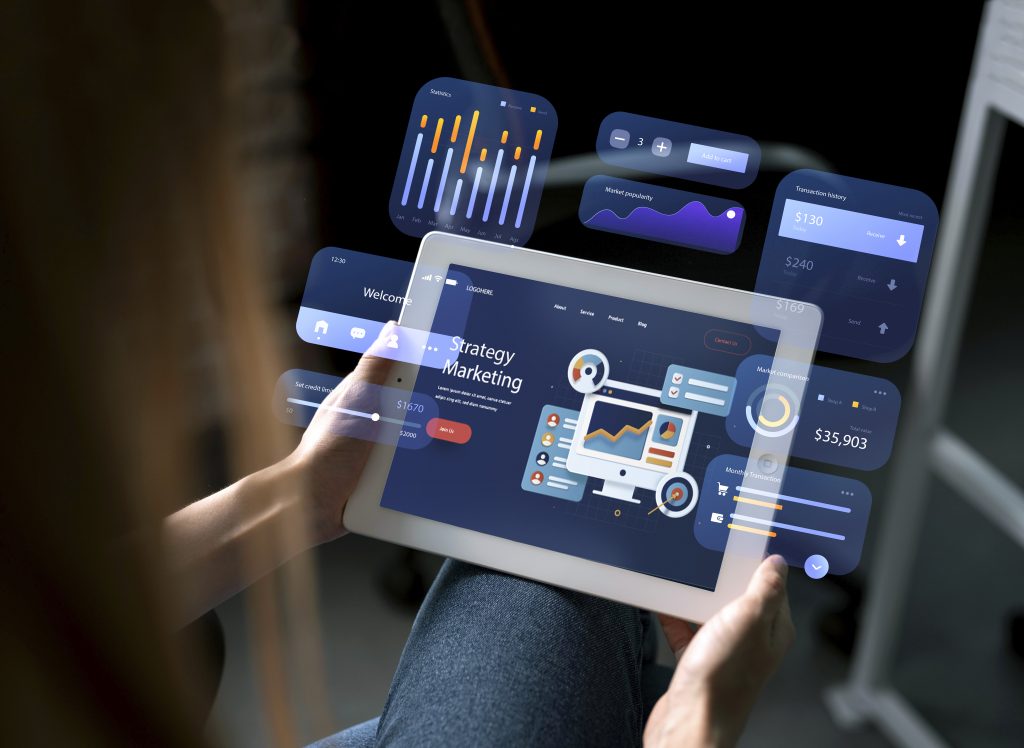In the fast-paced world of technology, where innovation and functionality often take center stage, one crucial factor often determines a product’s success or failure: User Interface (UI) and User Experience (UX) design. Exceptional UI/UX design is no longer a luxury—it’s a necessity. It bridges the gap between cutting-edge technology and the human experience, turning complex systems into intuitive tools and passive users into loyal advocates.
This article explores the pivotal role of UI/UX in technology and software development, its impact on user satisfaction and business outcomes, and how organizations can integrate superior design principles into their strategies to drive engagement, efficiency, and innovation.
Why UI/UX Design Matters in Technology
1. User Satisfaction and Retention
A well-designed UI/UX ensures that users find technology easy to use, enjoyable, and valuable. Positive experiences foster loyalty, while poor design can lead users to abandon a product entirely.
- Example: Research shows that 88% of online consumers are less likely to return to a website after a bad experience. Seamless navigation and intuitive interfaces keep users coming back.
2. Enhanced Productivity and Efficiency
In enterprise software and tools, intuitive design minimizes the learning curve and reduces errors, enabling users to perform tasks efficiently. This directly impacts operational productivity and reduces training costs.
- Example: A logistics company improved task completion time by 40% after redesigning its fleet management software with user-centric features.
3. Business Success and ROI
Good design drives better customer experiences, which translate to higher adoption rates, better reviews, and ultimately, increased revenue.
- Example: A retail app optimized for UX saw a 200% increase in conversions after incorporating streamlined navigation and personalized recommendations.
4. Competitive Differentiation
In a saturated market, UI/UX can set a product apart. Users gravitate towards solutions that offer superior ease of use, accessibility, and emotional engagement.
- Example: Apple’s focus on minimalist, user-friendly design has consistently distinguished its products from competitors, creating an unparalleled brand loyalty.
Key Principles of Effective UI/UX Design
User-Centered Design (UCD)
Focus on understanding user needs, behaviors, and pain points to design experiences that resonate. User personas, journey mapping, and usability testing are critical in this process.
Consistency and Familiarity
Maintain consistent design patterns, navigation structures, and visual elements to ensure users feel at ease, regardless of the platform they’re using.
Accessibility and Inclusivity
Design for everyone, including users with disabilities. Accessible design not only expands the user base but also reflects positively on the brand’s values.
Mobile-First Approach
With mobile usage surpassing desktop, designing with a mobile-first mindset ensures that interfaces work flawlessly on smaller screens.
Iterative Design and Feedback Loops
Continuously refine and improve designs based on user feedback and data analytics. Design is an ongoing process, not a one-time event.
Trends in UI/UX Driving Innovation
AI-Powered Personalization
Artificial intelligence enables hyper-personalized user experiences by analyzing user behavior and preferences in real time.
Example: A fitness app uses AI to recommend tailored workout plans based on past activity and goals.
Augmented Reality (AR) and Virtual Reality (VR)
Immersive UI/UX designs are transforming industries like gaming, retail, and education by merging physical and digital experiences.
Micro-Interactions
Small, subtle animations or feedback mechanisms enhance user engagement by providing instant gratification and feedback.
Example: A social media platform uses micro-interactions like animated "likes" to keep users engaged.
Dark Mode and Minimalism:
Simplified, aesthetically pleasing interfaces with options like dark mode are becoming standard for user comfort and visual appeal.
Voice and Gesture Interfaces
With advancements in technology, voice-activated and gesture-based interfaces are gaining popularity, offering hands-free interaction.
Example: Smart home devices like Amazon Alexa rely heavily on voice UI to enhance convenience.
Challenges in Achieving Great UI/UX
Balancing Functionality and Simplicity
Overloading users with features can overwhelm them, while oversimplification may compromise functionality.
Rapid Technological Evolution
Keeping up with constantly changing user expectations and technology trends requires agility and continuous learning.
Resource Constraints
Designing exceptional UI/UX requires skilled designers, time, and investment, which can be challenging for smaller businesses.
How SeamFlex Can Assist
At SeamFlex Consulting, we recognize that exceptional UI/UX design is the cornerstone of successful technology solutions. We help businesses deliver seamless and engaging experiences that drive satisfaction and business outcomes. Here's how we can assist:
We work with clients to define clear design goals aligned with their business objectives, ensuring every aspect of the UI/UX supports their vision.
SeamFlex conducts thorough user research and usability testing to uncover insights that guide intuitive and user-friendly designs.
Our team ensures that your product meets accessibility standards, making it usable for diverse audiences, including those with disabilities.
We create tailored, cutting-edge designs that integrate seamlessly with your technology stack, incorporating trends like personalization and micro-interactions.
We provide continuous support to refine and enhance your UI/UX based on user feedback and analytics, ensuring your product evolves with user expectations.
Final thoughts...
In the digital age, the importance of UI/UX design cannot be overstated. It’s not just about aesthetics—it’s about creating meaningful, efficient, and enjoyable interactions that drive user satisfaction, loyalty, and business success. As technology continues to advance, investing in exceptional UI/UX design will remain a key differentiator for companies looking to stand out in competitive markets.
Ready to elevate your product’s user experience?
Contact us today to explore how we can help you design intuitive and engaging technology solutions that drive results.


